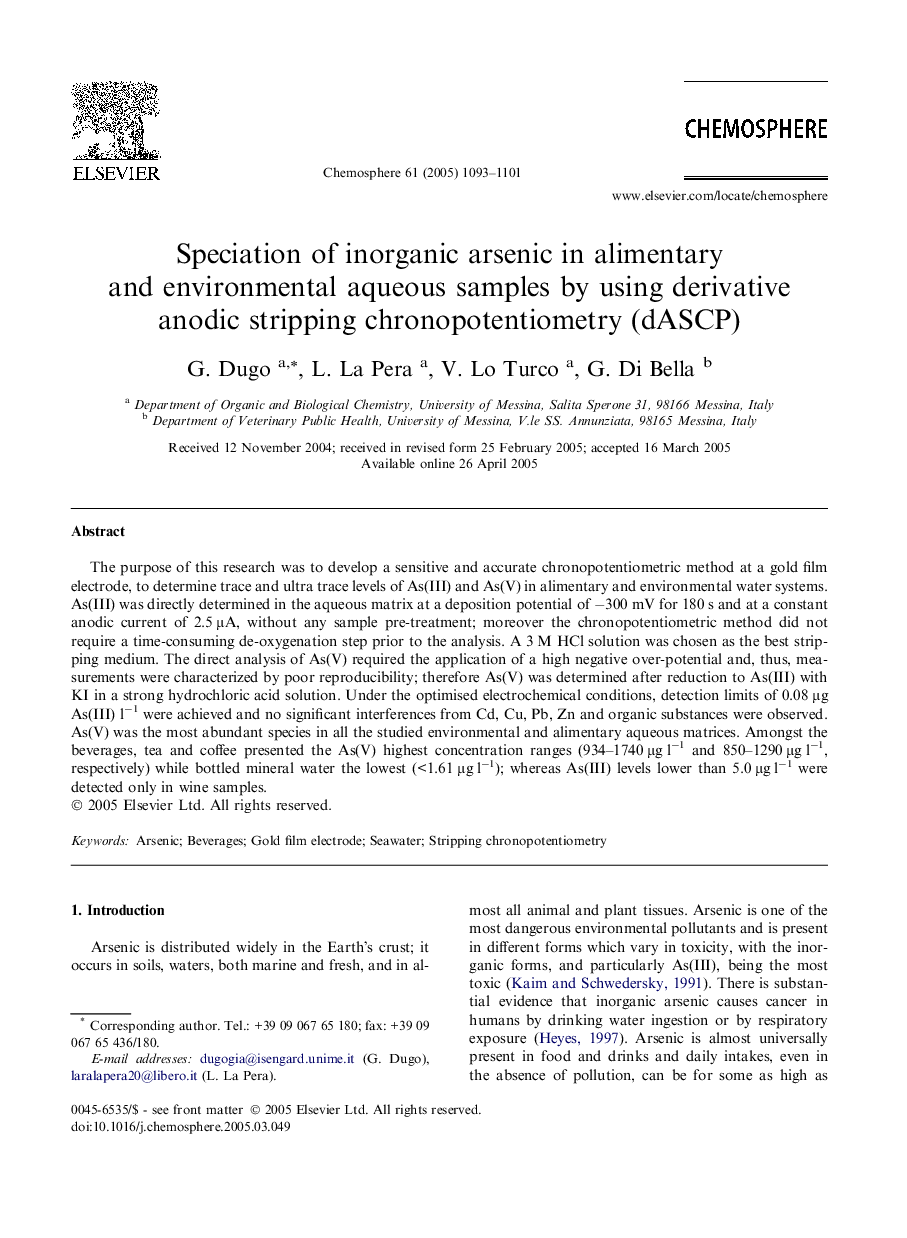| Article ID | Journal | Published Year | Pages | File Type |
|---|---|---|---|---|
| 9451394 | Chemosphere | 2005 | 9 Pages |
Abstract
The purpose of this research was to develop a sensitive and accurate chronopotentiometric method at a gold film electrode, to determine trace and ultra trace levels of As(III) and As(V) in alimentary and environmental water systems. As(III) was directly determined in the aqueous matrix at a deposition potential of â300 mV for 180 s and at a constant anodic current of 2.5 μA, without any sample pre-treatment; moreover the chronopotentiometric method did not require a time-consuming de-oxygenation step prior to the analysis. A 3 M HCl solution was chosen as the best stripping medium. The direct analysis of As(V) required the application of a high negative over-potential and, thus, measurements were characterized by poor reproducibility; therefore As(V) was determined after reduction to As(III) with KI in a strong hydrochloric acid solution. Under the optimised electrochemical conditions, detection limits of 0.08 μg As(III) lâ1 were achieved and no significant interferences from Cd, Cu, Pb, Zn and organic substances were observed. As(V) was the most abundant species in all the studied environmental and alimentary aqueous matrices. Amongst the beverages, tea and coffee presented the As(V) highest concentration ranges (934-1740 μg lâ1 and 850-1290 μg lâ1, respectively) while bottled mineral water the lowest (<1.61 μg lâ1); whereas As(III) levels lower than 5.0 μg lâ1 were detected only in wine samples.
Related Topics
Life Sciences
Environmental Science
Environmental Chemistry
Authors
G. Dugo, L. La Pera, V. Lo Turco, G. Di Bella,
